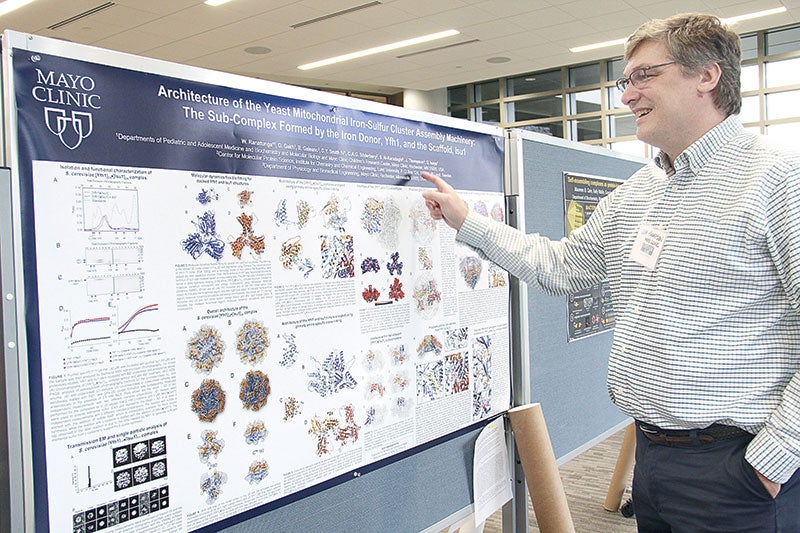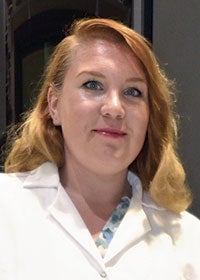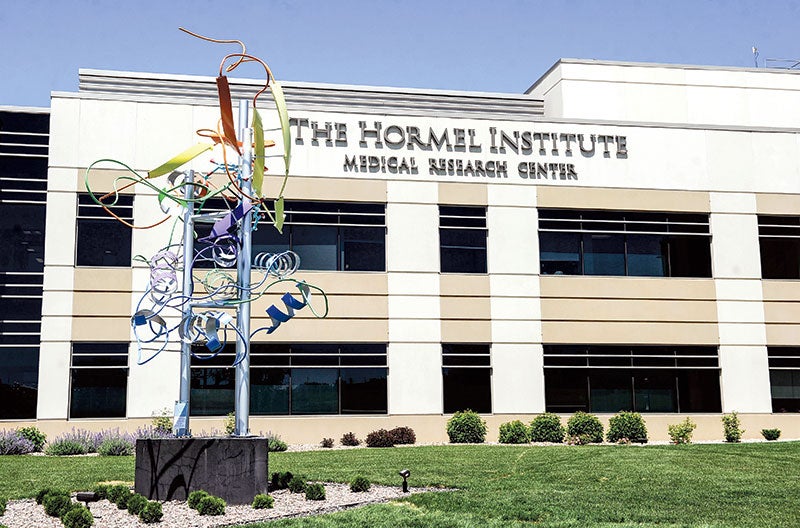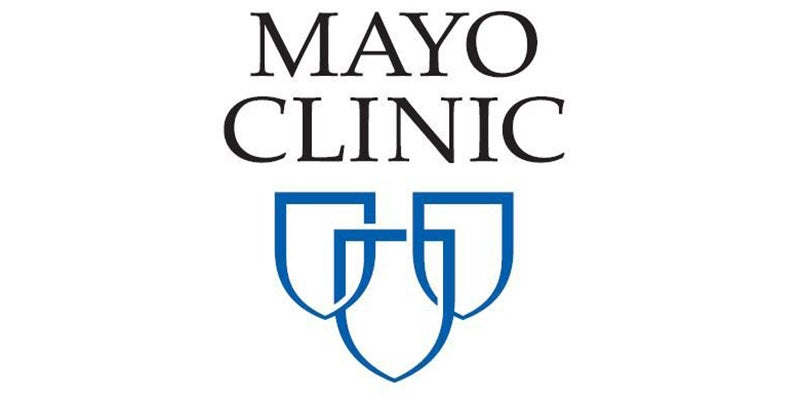Microscope gazes into the future
Published 10:08 am Tuesday, October 18, 2016

- Mayo Clinic crystallographer Jim Thompson talks about a poster he and his Mayo colleagues displayed during a symposium at The Hormel Institute Monday. Jason Schoonover/jason.schoonover@austindailyherald.com
Mayo Clinic crystallographer Jim Thompson likes what he sees with the Triton Krios microscope at The Hormel Institute in Austin; in fact, he’s hoping he and his fellow Mayo scientists will be able to use it.
“I’m very impressed,” he said.
About 100 scientists gathered at The Hormel Institute Monday for a joint structural biology symposium that focused on cryo-electron microscopy.
Its centerpiece was the Triton Krios, arguably the largest and best microscope in the world.
The $4.3 million microscope, whose installation began earlier this year as part of the Institute’s multi million dollar expansion, is undergoing diagnostic testing by its maker, FEI, and should be up and running by the New Year, said Anna Sundborger, lead scientist for cryo-EM at the institute.

Sundborger
The Triton Krios uses 2-D electron imaging where samples are studied at cryogenic — extremely cold —temperatures.
The better the microscope, the better to study the structure of proteins and amino acids. That information will help to understand and battle cancer.
That’s where people like Thompson come in.
Crystallographers study the atomic and molecular structures, taking pictures of atoms and proteins with the intent of studying the structure and makeup with the goal of finding ways to therapeutically modify those cells for treatments.
But the study of such structures is a tricky business — they’re small and the structures change, making for a high failure rate for studies.
Thompson hopes the Triton Krios enables scientists to student small cell structures and proteins, and it freezes them to temperatures below minus 238 to eliminate the needs for dyes or fixing agents.
“What we want is to know where those atoms are,” Thompson said.
It is the only one used for biological samples in the Midwest, according to Institute officials. There are less than 50 similar microscopes in the U.S., according to Institute officials; of those, only about 20 are installed, said Bob Ashley, a lead lab scientist for the Institute.
“We have the leader in the field, the gold standard. And we have it right here in Austin, Minnesota,” he emphasized.
The symposium also served as a way to “introduce ourselves to the larger research community,” said Sundborger. While the emphasis of the Institute continues to be cancer research — and the Triton Krios will be a large part of that — there is the opportunity for collaborations between the Institute and other medical institutions.
Symposium topics ranged from the latest in Cryo-EM research and technology, as well as a poster session — kind of a scientists’ science fair — dealing with Cryo-EM. The last session included a Cryo-EM lab tour at the Institute.
—Jason Schoonover contributed to this report.




